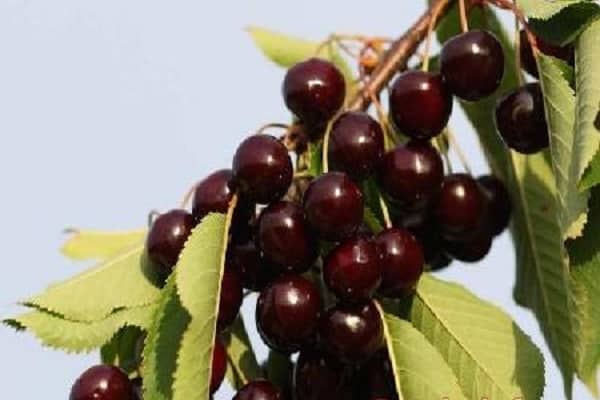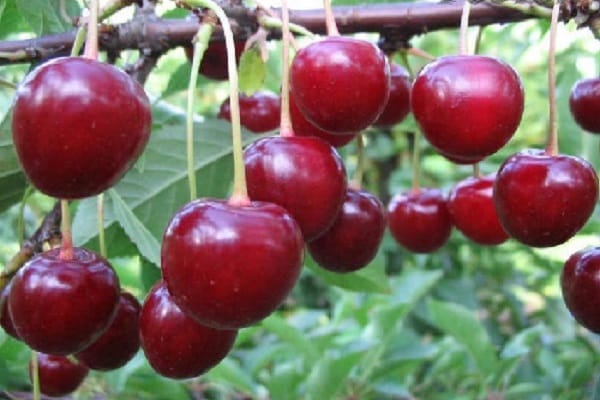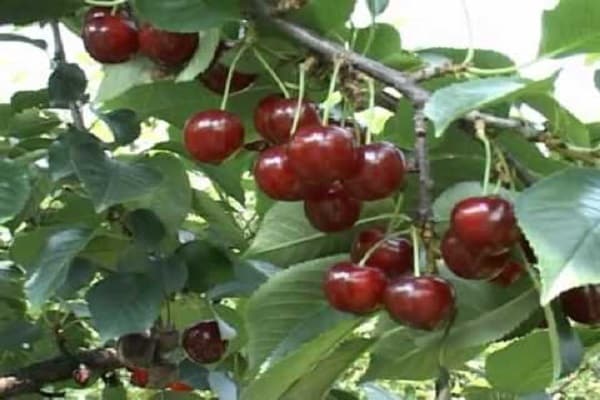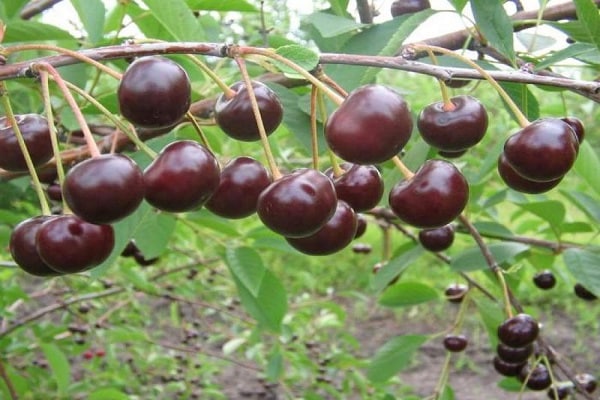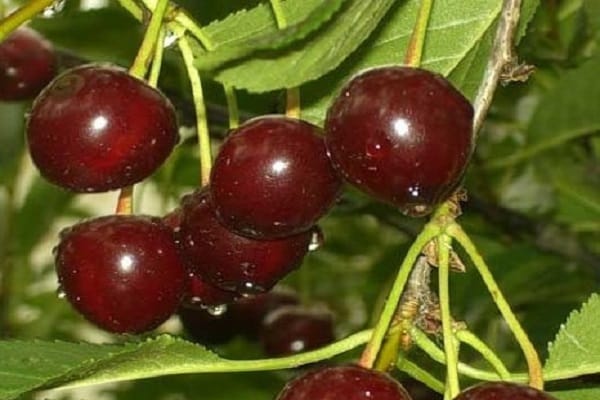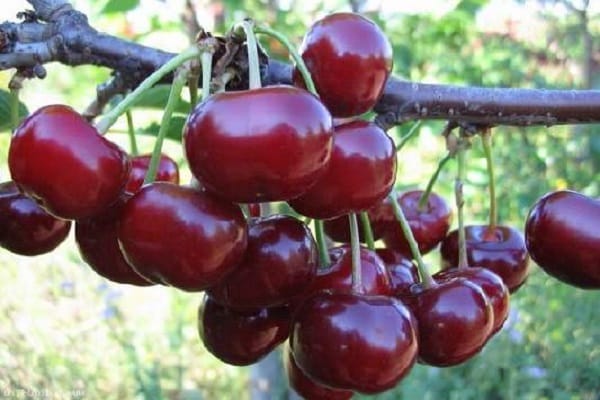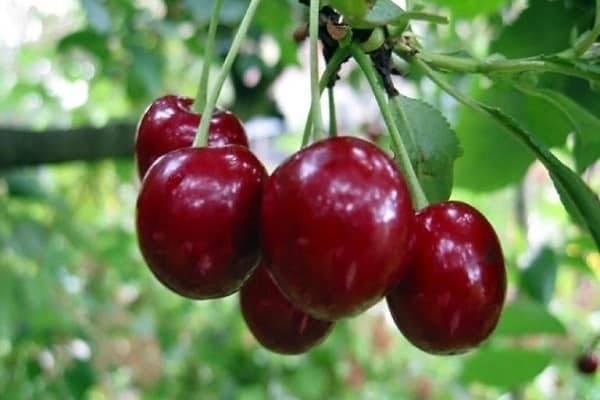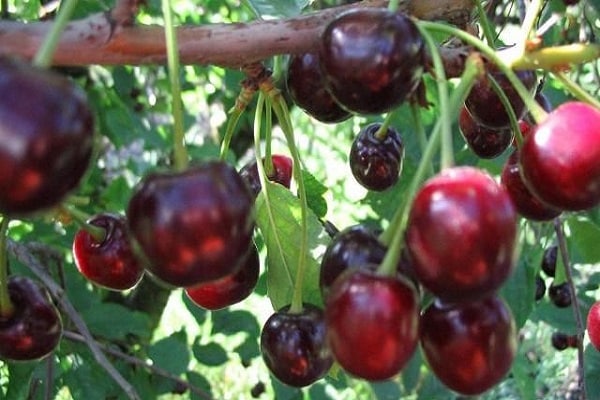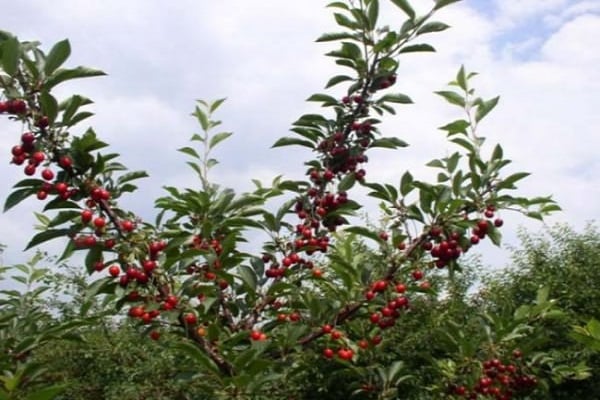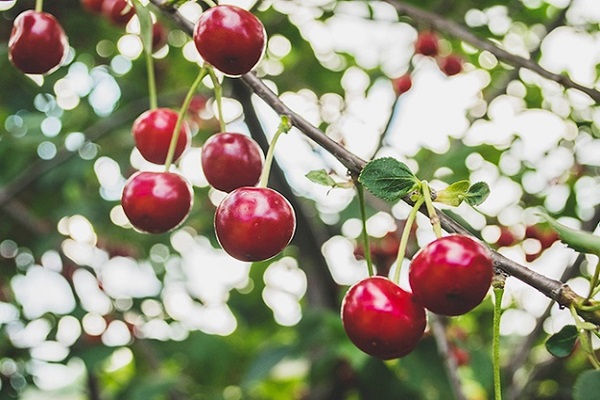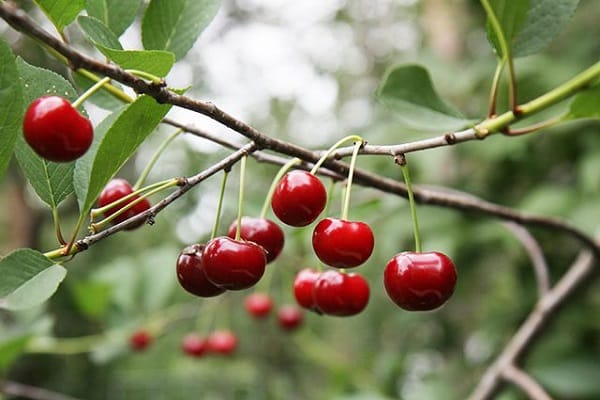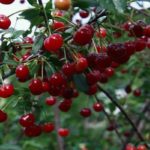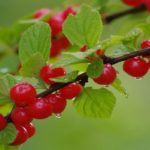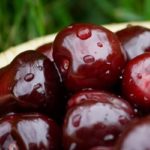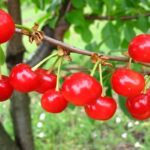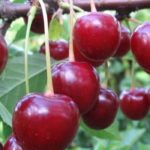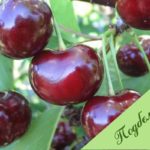The Brunette cherry variety has many advantages. In order to annually harvest a large, high-quality harvest, you need to take a responsible approach to choosing a seedling and a place for planting. By creating certain conditions and taking into account the rules of crop care, you will not have to deal with diseases and pests, and the fruits will be juicy and sweet. Care involves establishing a regime of watering, fertilizing and pruning.
History of origin of the variety
The Brunette variety was bred by two breeding scientists, Kh. K. Enikeev and S. N.Satarova, by free pollination of the Zhukovskaya cherry variety. The variety was included in the State Register for the Central Region of the Russian Federation in 2001.
Description of the variety
The description of the variety states that the cherry is medium-sized and grows up to 2.5 meters. The crown is spreading, shaped like a ball, and of medium density. The oblong leaves are dark green in color and have small rounded teeth along the edges. During flowering, small white flowers open.
The fruits themselves are small, round-flattened in shape. The weight of one cherry reaches 4 g. The thick skin is dark burgundy in color. The pulp is juicy, dark red in color. The oval stone is easily separated from the mature pulp. The berries hold tightly to the stalk, so they do not fall off. Ripening begins at the end of July.
The advantages of the variety include:
- consistently high fruiting;
- cherries tolerate drought well;
- high resistance to low temperatures;
- ripe fruits do not crumble or crack for a long time.
The weakness of the Brunette variety is its poor resistance to fungal diseases.
Landing rules
The Brunette variety is planted in an open area, free for sunlight and heat. Cherries develop well in fertile, loose soil, which is characterized by high aeration and neutral acidity.
Planting work begins at the end of April, when there is no risk of frost returning and the weather remains warm and dry for long days. Seedlings planted in spring take root better and adapt to a new location.
Dig a hole 60 cm deep; a drainage layer of crushed stone or expanded clay must be laid on the bottom. Then a layer of soil is filled with the addition of mineral and organic fertilizers.After this, regular soil is again filled in and watered.
Selected seedlings are planted in the prepared planting hole and covered with soil and watered with warm, settled water.
Features of care
Cherry Brunette is unpretentious and quickly adapts to any conditions. But to increase productivity, it is necessary to follow the rules of care.
Trimming and shaping
Cherry formation includes several points:
- pruning side branches;
- thinning foliage;
- removal of damaged, dry and excess branches;
- rejuvenation of culture.
From the central trunk of the cherry tree there are many side branches that grow in three tiers. They begin pruning after their length reaches 50 cm. Pruning begins with branches that are below 40 cm from the ground.
Watering
Since the Brunette cherry continues to develop without a sufficient amount of moisture, watering is carried out only a few times during the entire growing season: during flowering, the formation of ovaries, after the leaves fall.
A month before the expected harvest, watering is stopped, even if the weather is dry. Excessive soil moisture leads to cracking of the berries and their rotting.
Fertilizers
If fertilizers were applied to the soil during planting, the supply of nutritional components will be enough for 2-3 years. After two years, fertilization is carried out according to the following scheme:
- fertilizing is necessary after the flowering period;
- Repeated application of fertilizers is carried out after two weeks.
Fertilizers must contain potassium, phosphorus and nitrogen. Immediately after feeding, the cherry tree trunk area is watered with water. This promotes better distribution of nutritional components.
Pests and diseases
Brunette cherry variety is damaged by the following pests:
- cherry aphid feeds on the sap of the plant, which leads to drying out of the crown;
- adult weevils and larvae damage buds, ovaries, flowers, seeds, resulting in a decrease in yield;
- sawfly larvae eat the leaves, the plant develops slowly or stops growing completely;
- Moth caterpillars feed on buds, leaves, buds and ovaries.
Most often, cherries are infected with diseases such as:
- Clusterosporiosis develops as a result of excess moisture and heat; brown spots appear on leaves and fruits, which then turn into holes;
- the fungal disease anthracnose at high humidity affects the fruit seeds, the berries themselves become covered with tubercles with a brown coating;
- A bacterial burn leads to damage to the branches and bark, they turn black and dry out, and the buds do not open.
When a problem is discovered, they immediately begin to fix it. Otherwise, not only will the yield decrease, but the entire tree will die.
Prevention
To avoid problems, preventive measures are taken:
- Weeds around the tree trunk must be destroyed;
- in autumn it is recommended to loosen the soil in the tree trunk zone;
- Regular pruning and thinning of the crown is necessary;
- It is important to set the correct watering regime.
As a preventive measure, solutions based on copper sulfate or potassium permanganate are used, which are sprayed onto the cherry crown.

